CRDCsmart 5 port usb+QC2.0 PA-T1
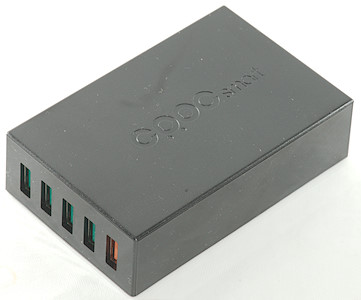
Official specifications:
-
Input: AC 100-240V~1.5A 50-60Hz
-
Output: 5V / 2.4A for each port
-
Output: 5V / 7.2A total normal usb
-
Output QC2.0: 5V / 2A, 9V / 2A, 12V / 1.5A
-
Usb outputs: 5
It is from Aliexpress dealer: CRDC official store
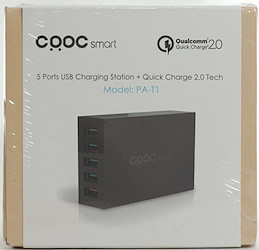
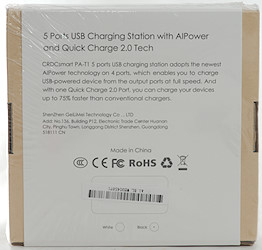
I got it in a card board box.
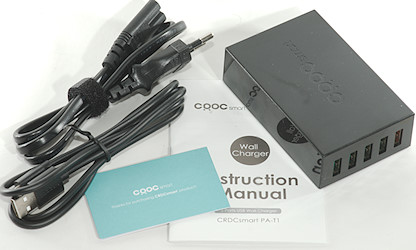
The box contained the charger, mains cable, a usb cable and a manual in multiple languages.
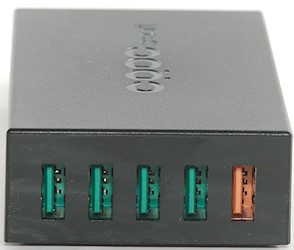
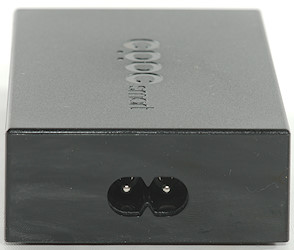

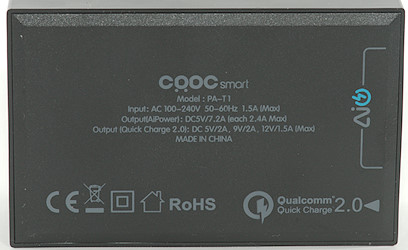
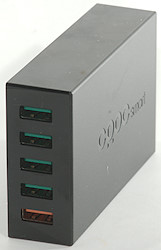
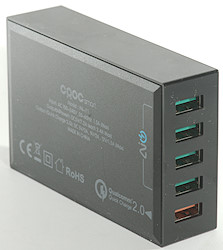
Measurements
-
Usb outputs is auto coding with Apple 2.4A as max.
-
QC usb output is auto coding with Apple 2.4A as max.
-
Power consumption when idle is 0.25 watt
-
Normal usb outputs are in parallel.
-
Weight: 157.4g without accessories.
-
Size: 94.2 x 60.4 26.5mm
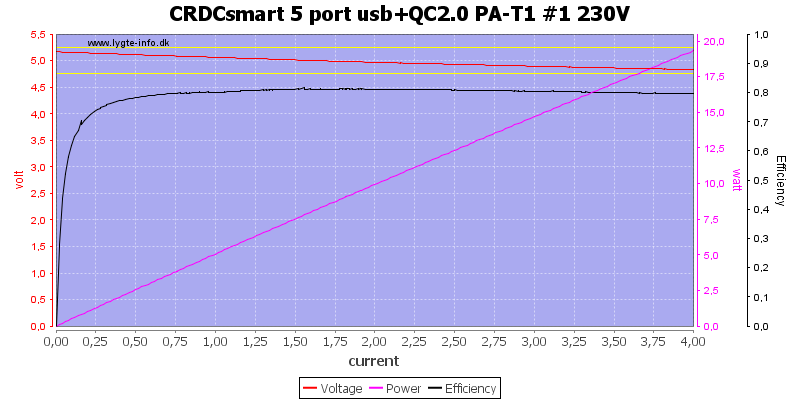
There is no individual port protection and a port can easily deliver 4A.
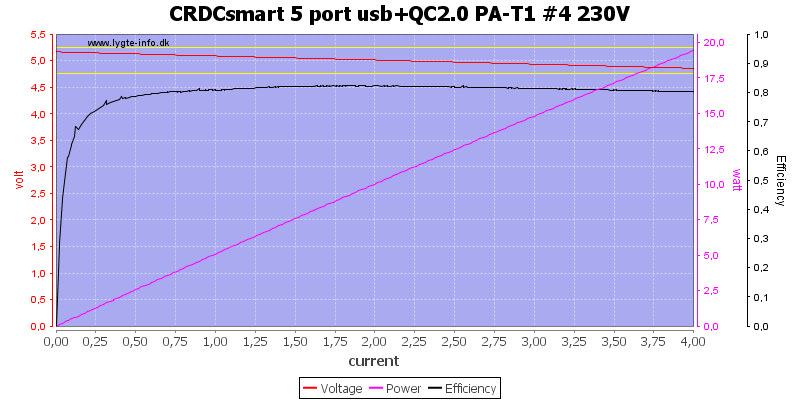
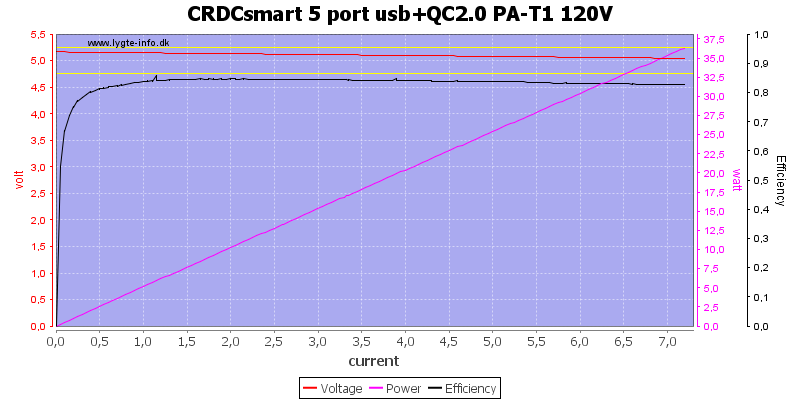
When running all normal usb outputs in parallel the overload protection is exactly at the rated 7.2A, this makes it impossible to use the rated current.
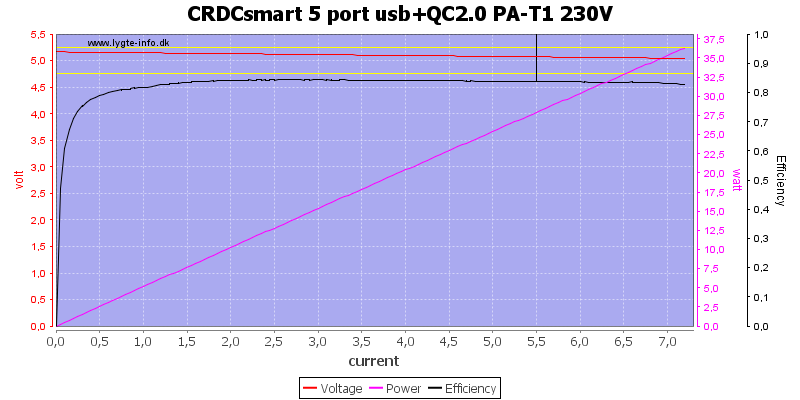
Both 120VAC and 230VAC looks the same.
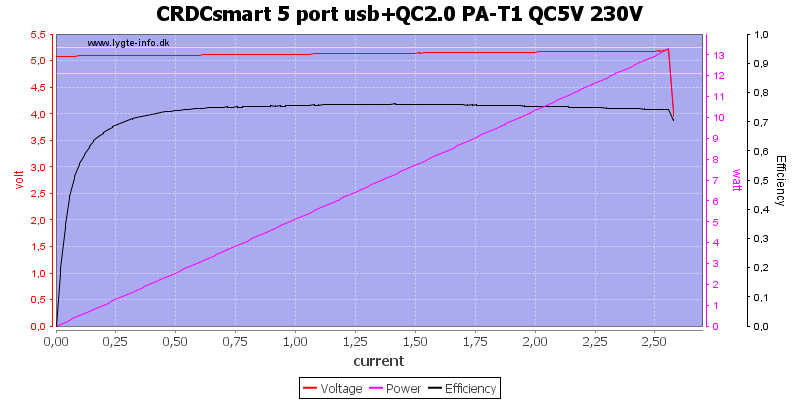
Quick charge has a limit at about 2.6A
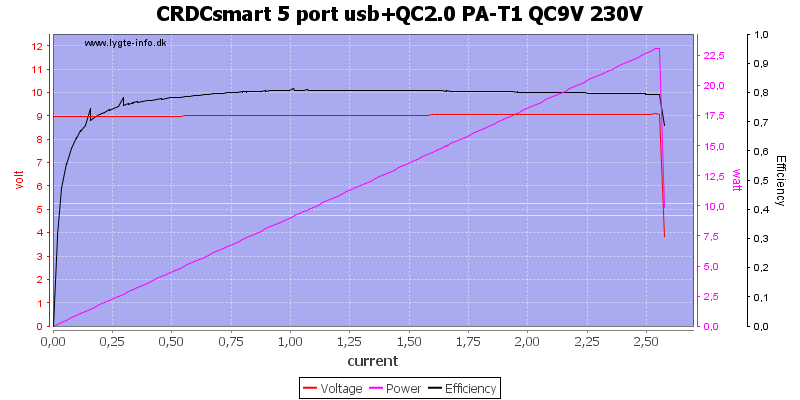
The limit is the same at 9V
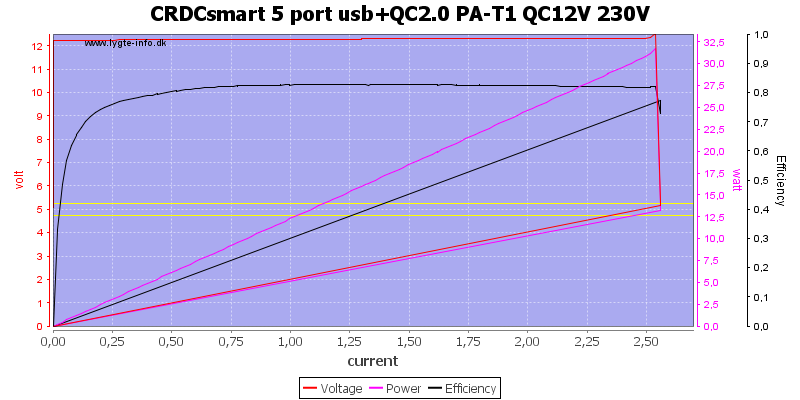
Even at 12V it can deliver above 2.5A
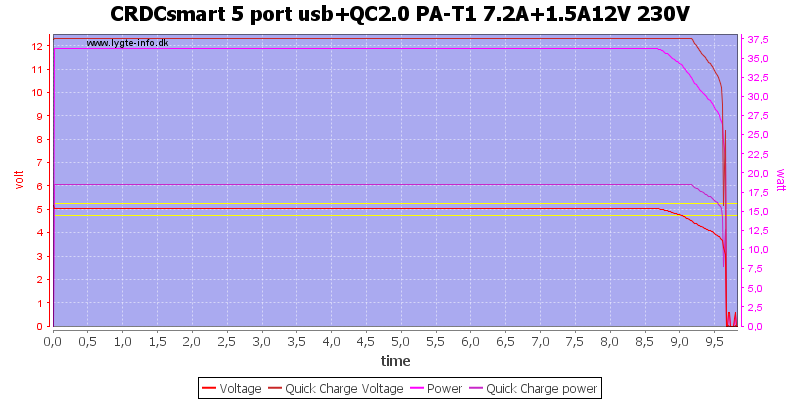
I tried running at maximum rated load, but it shut down after 10 minutes and it was both QC and normal usb output that turned off.
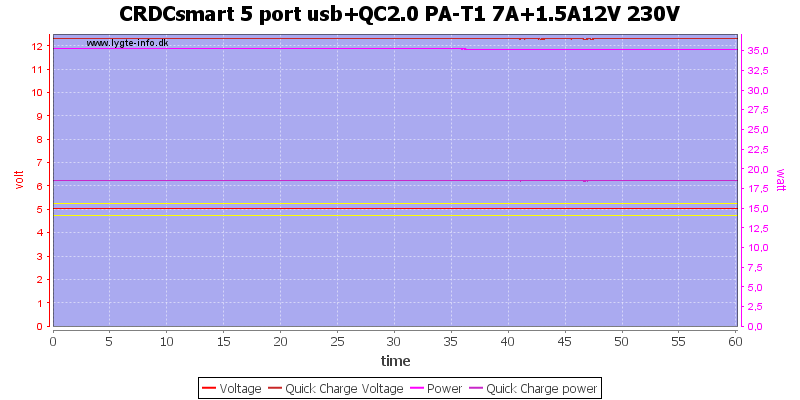
Reducing current a little bit made it work. This is 7A at 5V and 1.5A at 12V.
The temperature photos below are taken between 30 minutes and 60 minutes into the one hour test.
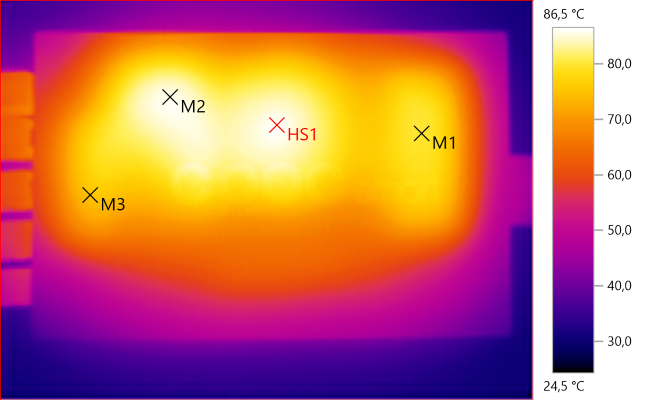
M1: 79,9°C, M2: 85,7°C, M3: 75,1°C, HS1: 86,5°C
M2 & M3 is the yellow heatsink with the rectifier diodes, HS1 is the transformer and M1 is the switcher transistor.
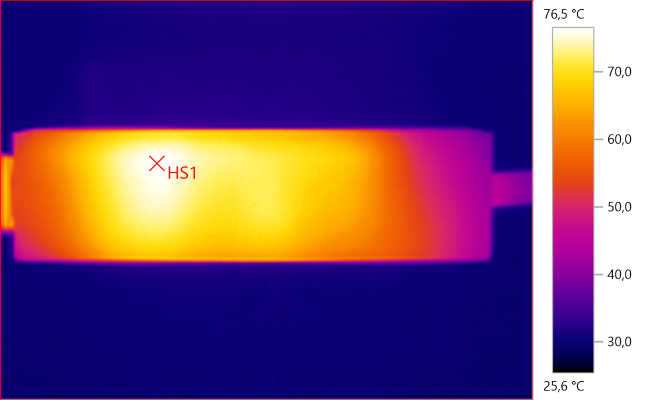
HS1: 76,5°C
HS1 is heat from the rectifier diodes.
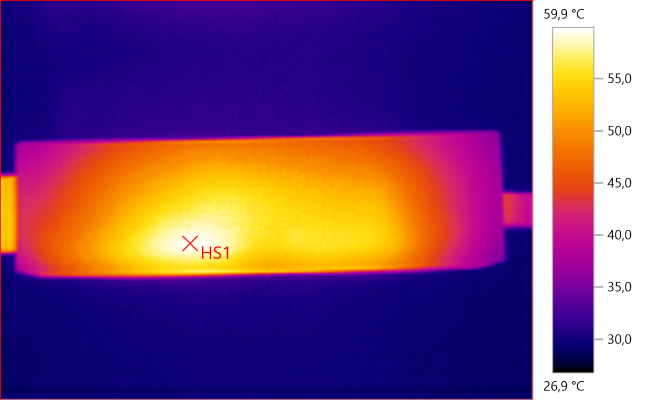
HS1: 59,9°C
HS1 is the QC rectifier.
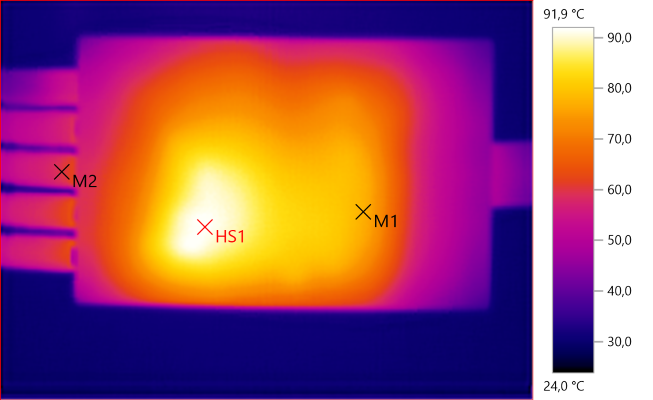
M1: 77,2°C, M2: 59,7°C, HS1: 91,9°C
HS1 is heat from the rectifier diodes.
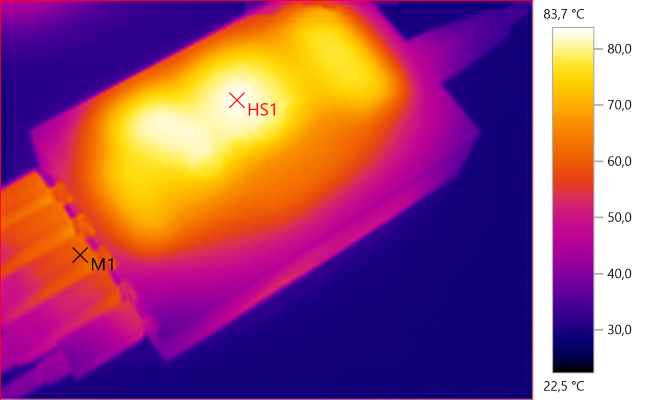
M1: 60,0°C, HS1: 83,7°C

At QC output 0.5A the noise is 12mV rms and 312mVpp.

At 1A the noise is 9mV rms and 282mVpp.

At 2.5A the noise is 17mV rms and 613mVpp.
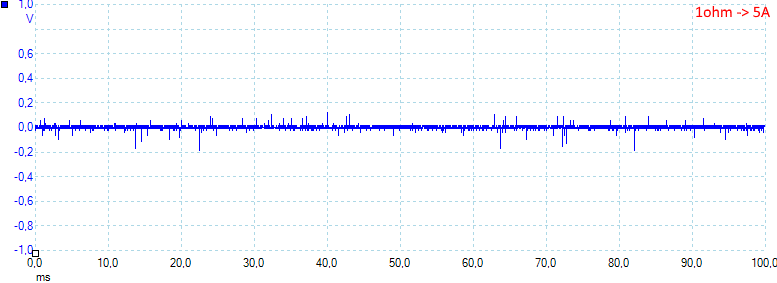
At 5A the noise is 16mV rms and 476mVpp.
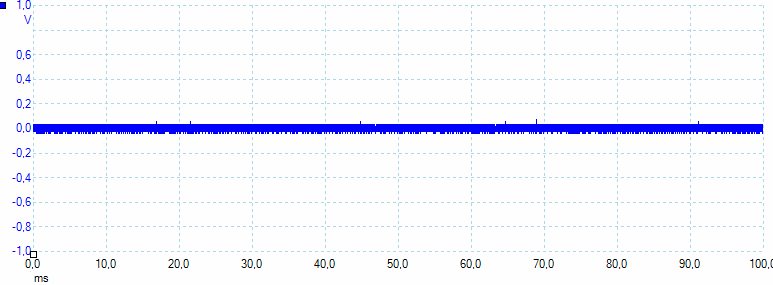
At 0.5A the noise is 26mV rms and 149mVpp.
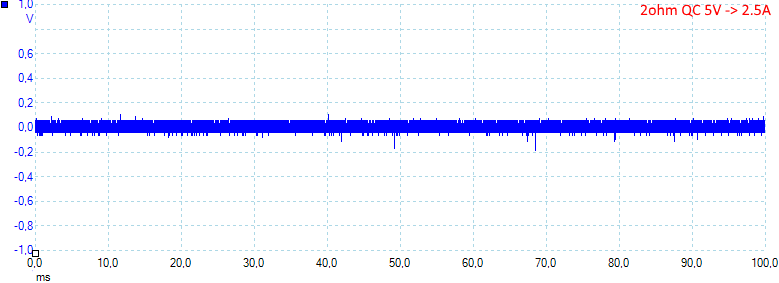
At 2.5A the noise is 38mV rms and 385mVpp.

At 12V 1.2A the noise is 10mV rms and 253mVpp.
Tear down
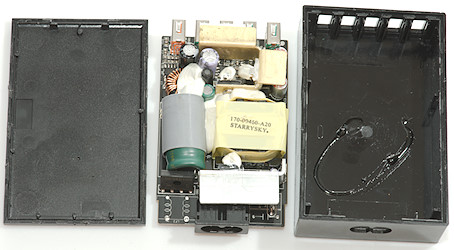
First some pressure with a vice, then I could break the bottom off with a spudger.
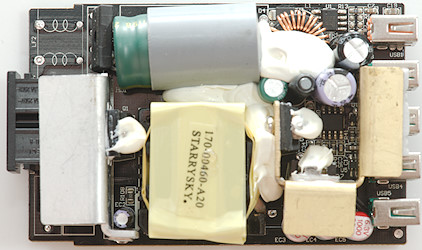
It is fairly packed, but it is very obvious that the common mode coil (LF2) is missing. Next to the missing common mode coil is the rectifier. The heatsink at the mains input has the mains switcher transistor (Q1). The big capacitor is very close to the low volt side and a rubber boot has been placed around it to get enough isolation (Most brands do it with yellow tape, but this is a better solution).
On the low volt side the yellow heatsink has 3 diodes (D?, D7, D8), two for 5V and one for QC.
In and around the U of the heatsink is a LM358, two auto coding chips (U4 & U5) and the reference (U10). There is also a inductor between two capacitors.
The inductor (L1) has a diode (D4) and a switcher below it to handle QC voltages, the QC controller is just besides the inductor (U1: FP6600).
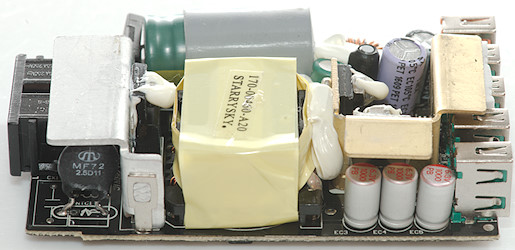
Below one of the heatsink is a inrush current limiter. Below the other heatsink is 3 capacitors and mounted on the heatsink is a rectifier diode (Mostly hidden).
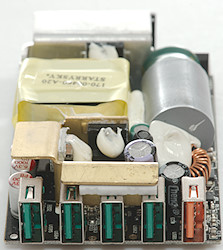
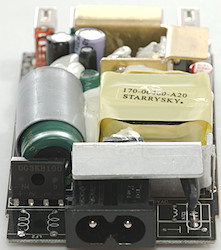
From this side the U10 & U4 circuit board marking can be seen and the rectifier below the heatsink.
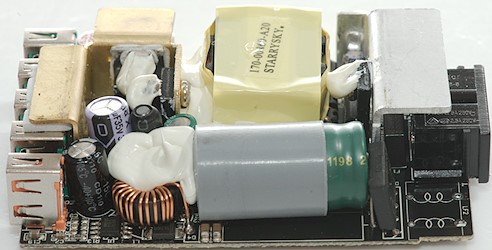
This side gives a better view of the QC circuit and it is possible to see the fuse behind the mains input.
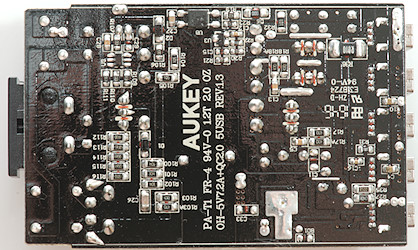
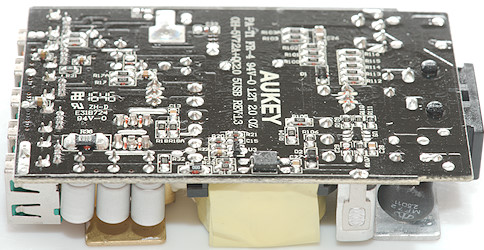
The mains switcher (U9) is here. There is also a 10mOhm (R36 R010) resistor near the rectifier diodes, this is probably part of the over current protection, together with the LM358 chip.
There is a reference chip more (U3) near the opto coupler (U8), this is probably the one used for voltage and the other one may be used for current.
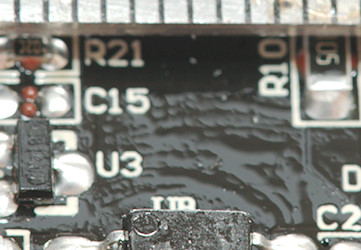
Safety distance is very good.
Testing with 2830 volt and 4242 volt between mains and low volt side, did not show any safety problems.
Conclusion
This charger can deliver a lot of current, but it gets very hot doing it. For a short time that is acceptable, but it is not the charger for a large collection of tablets. Like most chargers it is missing individual port protection.
With that said it is fairly good charger, noise is fine, it can deliver lots of current, it has auto coding and it has Quick Charge 2.0.
Notes
Index of all tested USB power supplies/chargers
Read more about how I test USB power supplies/charger
How does a usb charger work?